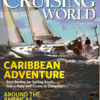Now that we get everything digitally, there seems to be a mindset among the manufacturers that more decimals are better. I disagree, but maybe I'm missing something on this. I'd like your opinion on two areas, lat/lon formats and heading/bearing formats.
Just to level set the discussion, using the DD MM.mmmm format for lat/lon, the decimals imply:
.mm = .01 of a minute which is 60 feet of latitude (1-2 boat lengths)
.mmm = 6 feet
.mmmm = 7 inches
.mm is plenty of resolution for me; anything more than that is just cluttering the display.
I can understand that perhaps with corrected GPS signal a workboat with appropriate systems might need more resolution to stay on station. But for a recreational boater, including fisherman, I don't see it and would at least like to have the choice of selecting lower resolution.
For bearings some systems are using DDD.d to provide tenths of a degree. I don't know anyone who can steer accurate to one degree, let alone a tenth of a degree. I've also not seen any autopilots that can steer that accurate either without relying upon XTE. I don't need tenths of a degree.
So how many digits do you need / want for lat/lon and bearings?


I don't think there is any advantage in displaying fewer decimals. The number crunching in the device will be done with what ever numerical precision required, within a mass produced chip set. That process is likely to require greater precision than we see on a display, and the designer determined how much screen real-estate should be allocated to numbers, balancing how big the numbers are vs. how many are seen. Is that what you are concerned about?
Simple answer
For a sailboat ... two digits right of the decimal is just right. Although the precision of the measurement is no where in that neighborhood, the feedback is extremely useful when trimming sails to understand if your last adjustment was helpful or not. Two digits allows you to normally get that feedback in a couple of seconds. If you have to wait for that feedback so long the wind has changed also as a variable (as can happen with one digit), the feedback isn't so clear. Maybe if I had three digits I would think that even better ... but two seems fine, and one is not enough. Once over 9.99 knots drop a decimal place.
For a power boat at low speeds ... one digit seems useful ... so you can see how far from or how far over the 5 knot speed limit you are in the channel. Once over 9.9 knots, drop the decimal place.
My concern is screen clutter. I have no concerns about compute power and no illusions about the real accuracy. My complaint is systems that display useless information, increasing clutter.
How many digits are necessary for lat/lon and bearings?
Do you need a ten thousandth of a minute, or is a hundredth sufficient?
Do you need to know that the BTW is 184.3 or is 184 sufficient?
Opps .. I didn't read carefully. My answer was for speed over water / speed thru water.
So to answer your question Russ, "How many digits are necessary for lat/lon and bearings?"
Lat/Long, without doing the research to verify, it would seem like .mm (1 boat length) is overkill when displaying lat/long in DD MM.mmmm. There should be options go getting that info or setting a waypoint with the precision of .mm or .mmm, but I would agree it's just screen clutter the rest of the time. Final answer MM.m
BTW (bearing to waypoint ?), although some could argue the loss of a decimal place could mean missing a destination by miles ... as long as the real implication is not that, I agree there is no benefit to cluttering our displays with fractions of degrees. Final answer DDD.
My concern is screen clutter. I have no concerns about compute power and no illusions about the real accuracy. My complaint is systems that display useless information, increasing clutter.
How many digits are necessary for lat/lon and bearings?
Do you need a ten thousandth of a minute, or is a hundredth sufficient?
Do you need to know that the BTW is 184.3 or is 184 sufficient?
Dan - yes - BTW is bearing to waypoint. Yes those are the questions I'm curious about. Anybody else?
Russ,
I agree with you that even with increased internal precision available the manufacturers should be careful in showing these. BTW 184 is sufficient, as is a hundredth of a degree.
It's just not gonna happen though. Look at how camera manufacturers keep increasing the number of megapixels in their cameras even though they know it is to the detriment of the quality of the pictures that can be taken!
One way to keep the "megapixel happy" boating crowd pleased is to have a setting that allows the user to choose not only which units (m/s, mph, knots) but also which resolution to display.
(Oh, and if this post works then the Panbo issues with my account have been solved by Ben!)